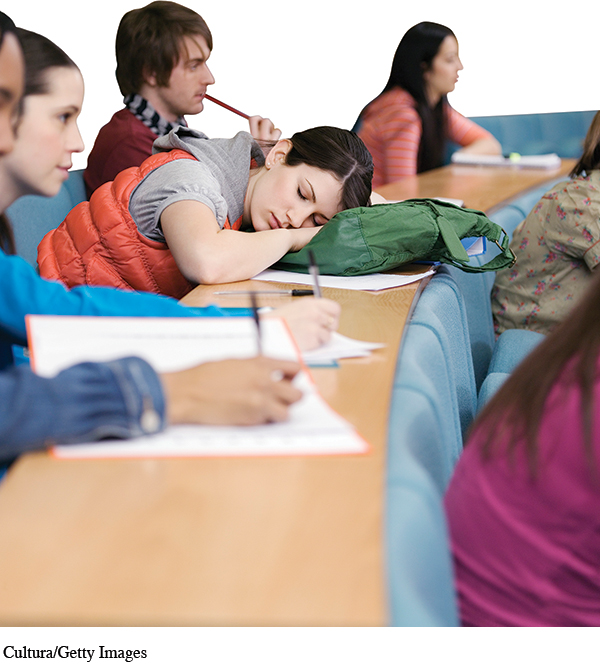Chapter Introduction
2
The Biology of Mind and Consciousness

SURVEY THE
CHAPTER
A Neuron’s Structure
How Neurons Communicate
How Neurotransmitters Influence Us
The Peripheral Nervous System
The Central Nervous System
Tools of Discovery—
Older Brain Structures
The Cerebral Cortex
THINKING CRITICALLY ABOUT: Using More Than 10 Percent of Our Brain
The Power of Plasticity: Responding to Damage
Our Divided Brain
Selective Attention
Sleep and Dreams
How long would it take you to learn and remember 25,000 streets and their connections? London taxi driver trainees take two to four years to master this maze before they are allowed to drive one of the city’s famous black cabs. Only half of these trainees will pass the difficult final test. But big rewards await those who do: increased status, better income, and an enlarged hippocampus. As the drivers’ street memory grows, so does their brain’s spatial memory center. Bus drivers, who navigate a smaller set of roads, gain no similar neural rewards (Maguire et al., 2000, 2006).
Our brain is constantly changing. Over millions of years, our brain evolved in ways that helped our ancestors survive and reproduce. Our individual brains also continue to adapt. Through repeated practice, musicians, ballerinas, and jugglers experience unique brain changes that improve their performance (Draganski et al., 2004; Hänggi et al., 2010; Herholz & Zatorre, 2012). They are not alone. The brain you’re born with is not the brain you will die with.
So, everything psychological is also biological. Our thoughts, feelings, and actions influence blood pressure, hormone release, and health. And yet our biology guides all that we do. You love, laugh, and cry with your body. Without your body—
We may talk separately of biological influences and psychological influences, but they are two sides of the same coin. In combination with social-